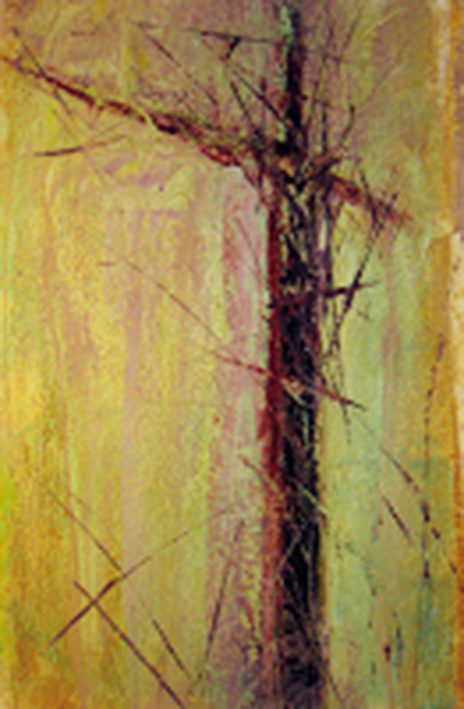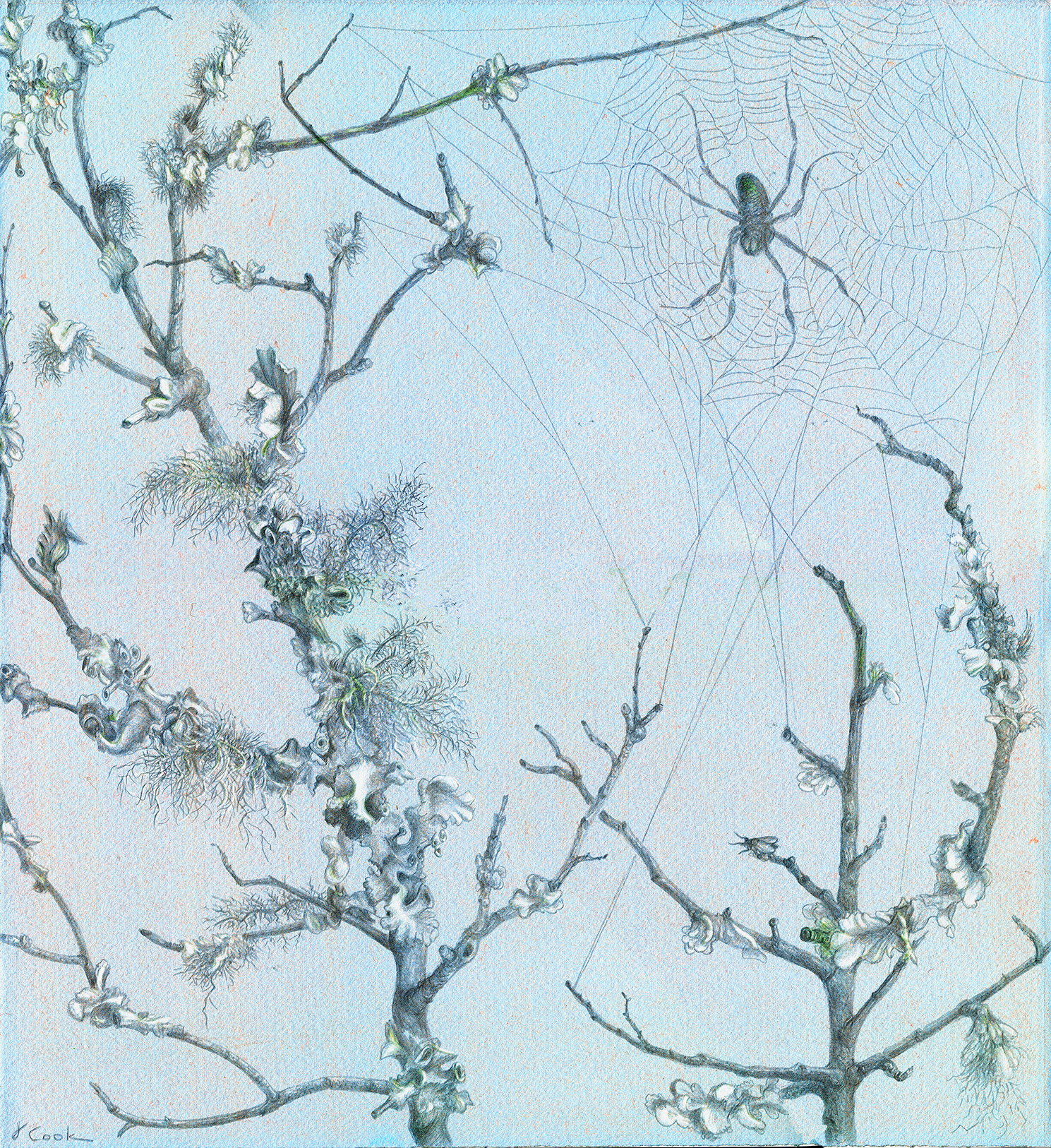At least it was not pouring with rain today, but nonetheless, it is one thing to deliver art to a museum or gallery and leave. It is quite another thing to have to hang the art yourself for an exhibition! And today was a case of the latter.
Actually, I was very fortunate, as this was for the exhibition, Point and Counterpoint, at Savannah Hospice Art Gallery, with monoprints by Daniel E. Smith and my silverpoints as a total counterpoint. So Dan and I spent nearly three hours sorting, hanging, adjusting and measuring to get the show looking respectable.
Coastal Meditation, monoprint, Daniel E. Smith artist (image courtesy of the artist)
Still Morning, monoprint, Daniel E. Smith artist (image courtesy of the artist)
As counterpoint to Dan's work, these are two of my silverpoint drawings - Come into my Garden! and High Point Dance.
Come into my Garden!, metalpoint and white gouache highlights, Jeannine Cook artist, Private collection
High Point Dance, metalpoint, Jeannine Cook artist
Mounting an exhibition is an every-challenging and interesting process. There is first the selection process - what art to exhibit? When there is a curator, obviously that person makes the decisions and "composes" the balance of art for his or her objectives. Themes, juxtapositions, contexts, styles and many other conscious or subconscious considerations operate in those choices to create the show. When it is the artist's choice on what to exhibit, it again is a series of choices that need to be made: firstly the title will be the overall guide. Then the coherence of the general body of work, with balance and variety, but nonetheless unity in the overall look.
When it is a two-artist exhibit, ideally the two artists need to have some feel for each other's work, so that there can be an interesting dialogue between the works. Playing off each other's styles, media, content, optic can lead to interesting effects that can enliven, albeit often subliminally, the resultant exhibition. When it is a group show, with many artists' works, things can get a little scattershot, but then there is an energy in a huge diversity of approaches.
Today, Dan and I decided to intersperse our work, rather than segregate our work into two sections. So colour and silverpoints are mingled, each contrasting well one with the other. Within that, there is a quiet pairing of similar (but not obvious) subject matter. Since Dan 's wonderful monoprints are in essence abstract, it is only through his "springboard inspiration" that the links can be made with my realistic silverpoint subject matter. Beyond that choice, there is then the rhythm along the wall to consider, especially when the display wall is a long one. We broke up the wall into all different shapes and sizes of work, trying to weave together a lively but diverse conversation of art.
The last and least fun part of the whole endeavour is ensuring that the art all hangs at levels that are coherent, given all the different sizes of frames, and that each piece hangs straight. Not always an easy achievement! The final step back to assess the whole exhibition is always a good moment. By that time, weariness has set in, as it is quite a physical workout too! The last touch: labels on the wall besides each work of art, and then the job is done. It was time for a rest! Now the show is launched and - one hopes - the dialogues begin between viewers and the works of art.
The exhibition will run from today until the end of June. The opening reception, to which all are invited, is on Thursday, 12th May, from 5.30 - 7.30 p.m. Come and assess the results of today's Point and Counterpoint.




![Bamboo in Snow -- Illustration from the Ten Bamboo Studio Manual of Calligraphy and Painting (Shizhuzhai shuhua pu), Hu Zhengyan [Hu Cheng-yen], Chinese (c. 1582 -1672) (after 1732, before 1703), (Image courtesy of the Harvard Art Museum)](https://images.squarespace-cdn.com/content/v1/58871e942994ca0cab5df1b1/1518970964747-HNY0UW3PDNP6WUW2FPHH/18721476.jpg)


